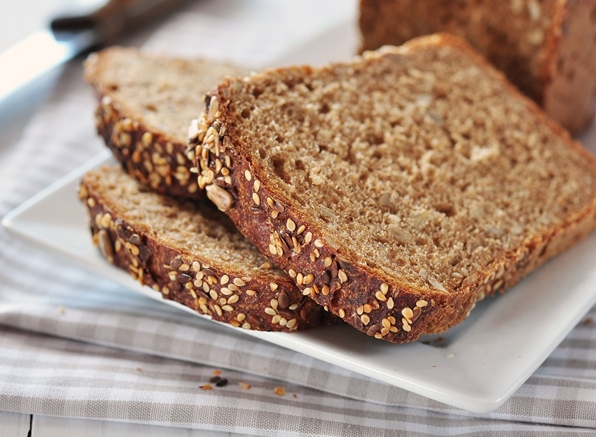When we Western folks think of protein, we almost always think ‘Meat’ first. In fact, dieticians and nutritionists often use ‘protein’ as a synonym for ‘meat’. But the times, they are a-changin’. And we can all benefit from broadening our traditional ‘meaty’ horizons…
 Whole Grain Foods: The easiest and cheapest way to
Whole Grain Foods: The easiest and cheapest way to
add plant protein punch to your daily menus!
I was shocked to clarity on this issue by a post I read recently on MSN.com. It was a slideshow, really – listing what the author, one Daphné Cyr, considers the top cheapest protein sources.
Let’s face it: We need to access the least-expensive proteins we can in these days of stratospheric food prices. And we also need to start shifting our focus re.- proteins from meat to plant sources. Soon, we’ll be forced to, by the demands of sustainability in the face of climate change!
What Cyr proposes
A survey of her list suggests Cyr is definitely focusing on non-animal, or sustainable animal products. Some of them I consider overly-esoteric for the average palate. Others are definitely NOT cheap. At least where I live.
But I do want to spotlight some my fave suggestions and explain why I like them.
Here we go…
Eggs
Yes. Of course. At the top of the list is Eggs, a quasi-sustainable animal agriculture product that contains a huge hit of protein in every unit.
Eggs are among the cheapest protein sources for their punch. You can get a dozen for as little as $2 at some stores. But the average price per Grade A Large Egg is currently $0.50 to $0.75 cents depending on the brand and where you live.
Add to that: Eggs have relatively recently been de-vilified by science and medicine as potential health threats. Take one look at their culinary versatility, and you can’t help but rank them Number 1!
Soy Beans
Soy beans and their related products – especially Tofu – have been prized sources of plant-based protein across half the world for thousands of years. We’ve been getting to know Sopy better over the past couple of decades. But we still have a long way to go! Even when paired with Rice, to constitute a complete dietary protein, Soy products are among the cheapest, most powerful protein sources we can easily access.
Buckwheat
It’s a grain/seed we can readily get, both as soup groats or flour. And it’s packed with protein. Traditionally planted by farmers to replenish nitrogen in the soil taken out by other grains and corn crops, Buckwheat has starred as an animal feed and in baked goods from time immemorial. It packs a complete dietary protein and doesn’t need to be paired with beans or rice to deliver full balanced nutrition.
Alas, we don’t eat so much of it today. I mentioned soups. My Scottish heritage enshrines dishes like pancakes made with a blend of Buckwheat and other flours. And the groats make a tasty and healthful alternative to oatmeal!
Quinoa
This cereal has been underappreciated in the West until relatively recently, when the Foodies, at first, started talking about it. Like Buckwheat, it delivers a complete dietary protein. And it has a nice, mildly nutty flavour that complements many foods you might want to serve on it or in it. It’s generally considered an alternative to Rice, in Western cooking. But it’s a food all its own. South American indigenous cuisines have been using Quinoa for millennia.
Edamame
An Asian bean, famous as a snack when roasted and salted. It can be added to many dishes just like lima, fava or kidney beans, but delivers a massive 18 grams of protein per cup / 245 ml. And it costs just $0.71 per 100 g.
Whole Grain Products
Yes! We’re not kidding. Any whole grain product can qualify for inclusion in that 1/4 wedge of your dinner plate that the official government Food Guides prescribe. In fact any food product you customarily use will be miles better for you, and comparatively huge in protein, of you opt for whole-grain over the plain white ‘standard’.
The cream of the crop
The foregoing are my beast-of-the-best of the cheaper (mainly plant-based) protein sources readily available to you today. They’ll become more familiar and more appreciated as time goes on, and we all shift our referents for protein from ‘animal’ to ‘plant’.
And if you’re already using some of the less-familiar foods in this list, dive right in and find out what you’ve been missing!
~ Maggie J.

